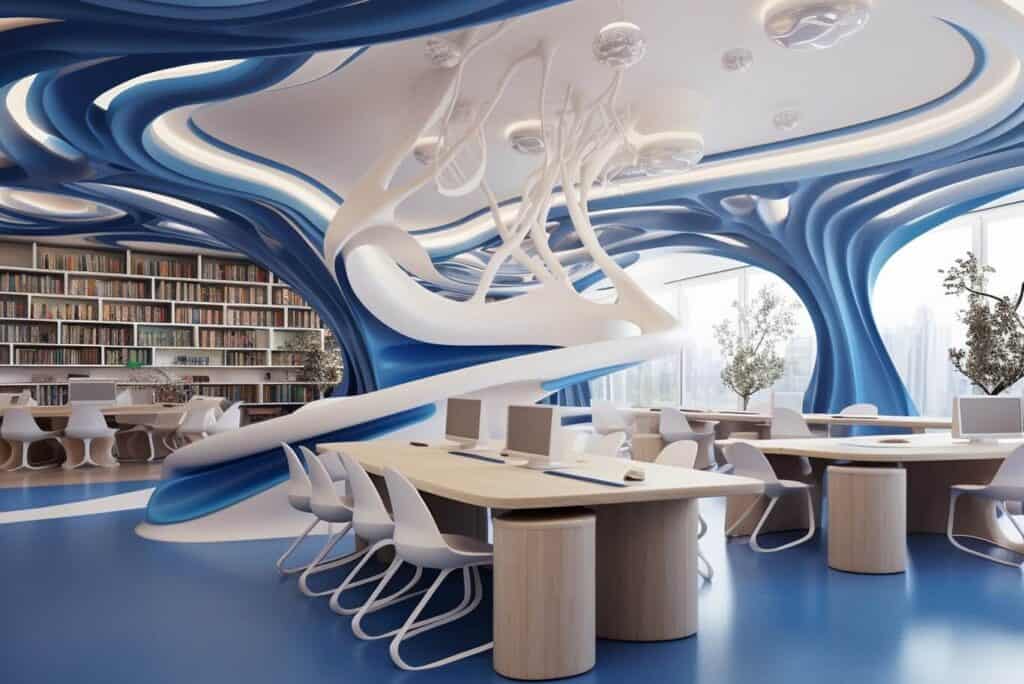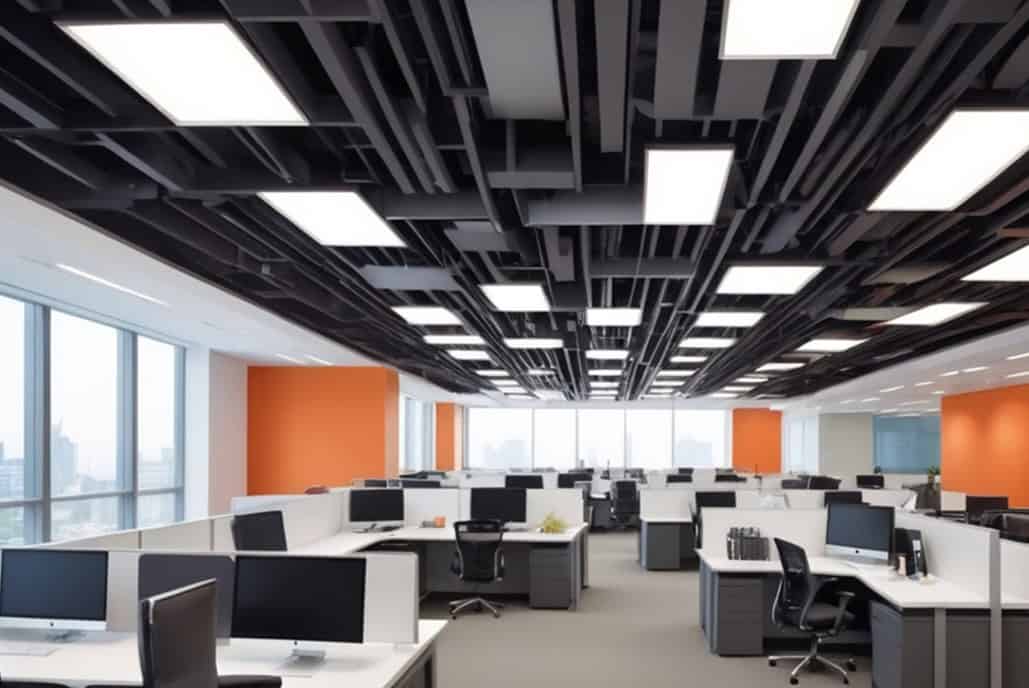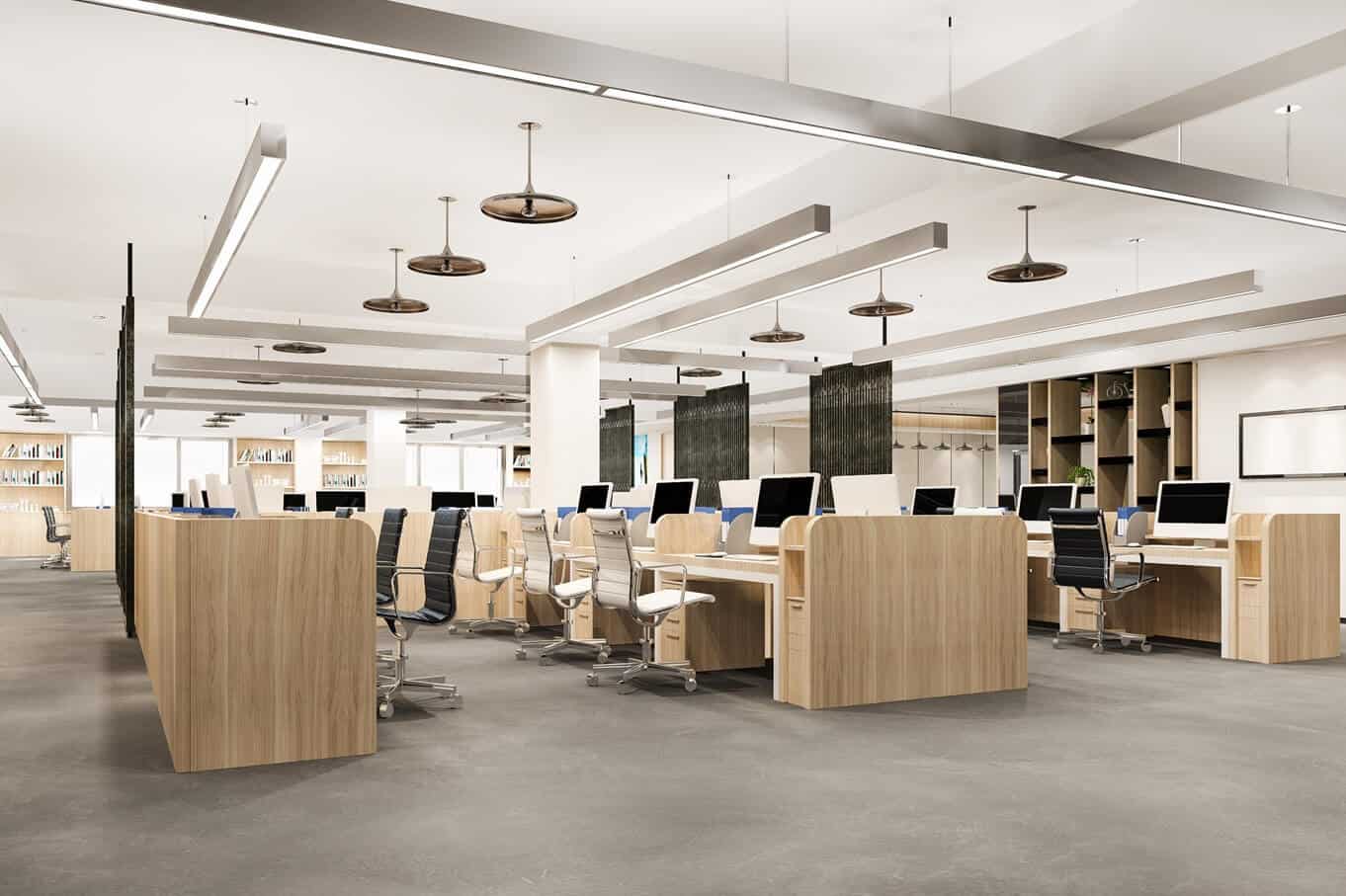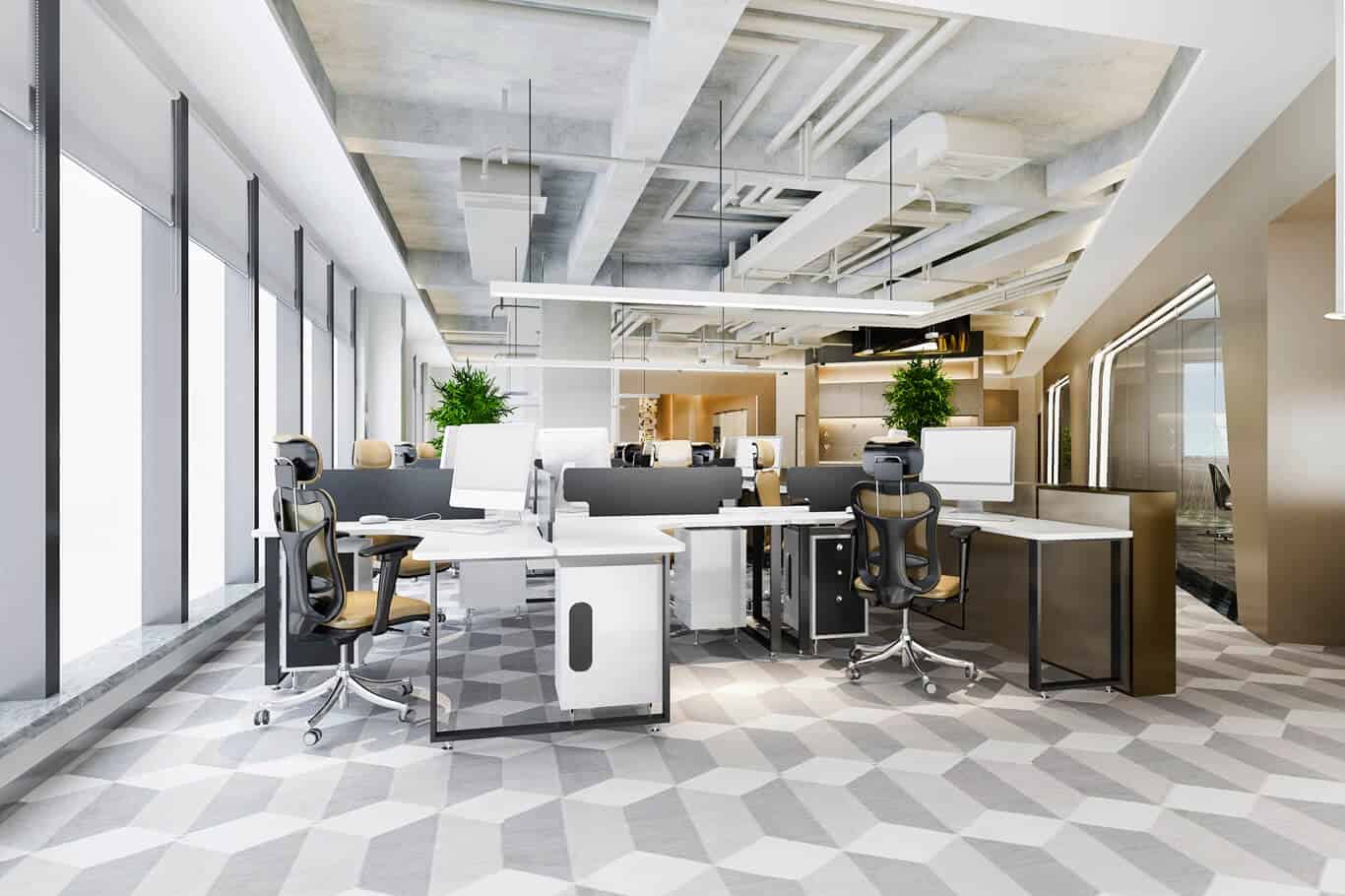In office design, false ceiling design for the office plays a crucial role in enhancing the overall look and feel of the workspace. Also known as dropped ceilings, these are secondary ceilings suspended below the main structural ceiling. They are created using a grid system and are often made of lightweight materials like gypsum, metal, or acoustic tiles.
The primary purpose of false ceiling design for offices is to conceal wires, pipes, and ducts, providing a neater and more organised appearance. Beyond functionality, they contribute to the aesthetics of an office by allowing for creative design elements and improved lighting solutions.
In essence, false ceiling designs for offices are not just about hiding the technical aspects of a building; they are a design tool that architects and interior designers use to transform ordinary office spaces into visually appealing, functional, and comfortable environments.
What is the Importance of selecting the right false ceiling design
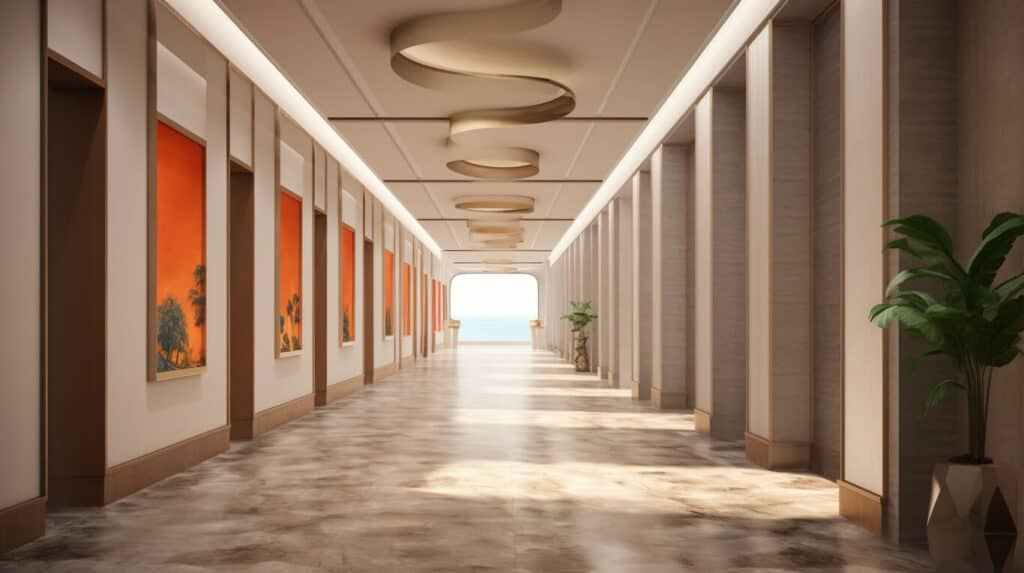
The selection of the right false ceiling design for the office plays a crucial role in shaping the overall ambiance, functionality, and productivity of different office areas. Here are several key reasons highlighting the importance of choosing the appropriate false ceiling design for office:
Aesthetic Appeal:
- First Impressions: The reception area is often the first point of contact for visitors and clients. An aesthetically pleasing false ceiling design for the office can create a positive and professional first impression, reflecting the company’s values and identity.
Functionality and Productivity:
- Conference Rooms: The right false ceiling design in conference rooms can impact acoustics, ensuring clear communication during meetings. Additionally, proper lighting integration enhances focus and productivity.
- Open Workspaces: false ceiling design for offices contribute to the overall functionality of open workspaces by providing acoustic solutions, delineating areas, and incorporating lighting designs that support employee concentration.
- Executive Offices: Executive spaces require a design that fosters a conducive environment for decision-making and strategic thinking. The right false ceiling design for the office can contribute to a comfortable and inspiring executive office atmosphere.
Employee Well-being:
- Breakout and Relaxation Areas: A well-designed false ceiling in break and relaxation areas can contribute to employee well-being. Incorporating elements like natural lighting and calming designs can enhance the overall atmosphere, promoting relaxation and creativity.
- Cafeteria/Kitchen Spaces: In these spaces, hygiene, maintenance, and a comfortable atmosphere are key. The right false ceiling design can contribute to a clean and inviting environment for employees to unwind during breaks.
Navigation and Wayfinding:
- Corridors and Hallways: false ceiling design for offices in corridors and hallways can aid in wayfinding and create a cohesive flow between different office areas. Lighting options can be strategically used to guide employees and visitors through the space.
- Budgetary Considerations: Cost-Effective Solutions: Choosing the right false ceiling design involves considering budget constraints.
Opting for cost-effective solutions without compromising quality ensures that the design aligns with financial parameters while still meeting functional and aesthetic requirements.
In conclusion, the importance of selecting the right false ceiling design for an office lies in its ability to create a harmonious, functional, and inspiring environment that positively impacts employees, visitors, and the overall success of the organisation. It goes beyond mere aesthetics, influencing factors such as acoustics, lighting, and sustainability to contribute to the overall well-being and productivity of the workspace.
Right False Ceiling Design for Various Office Areas
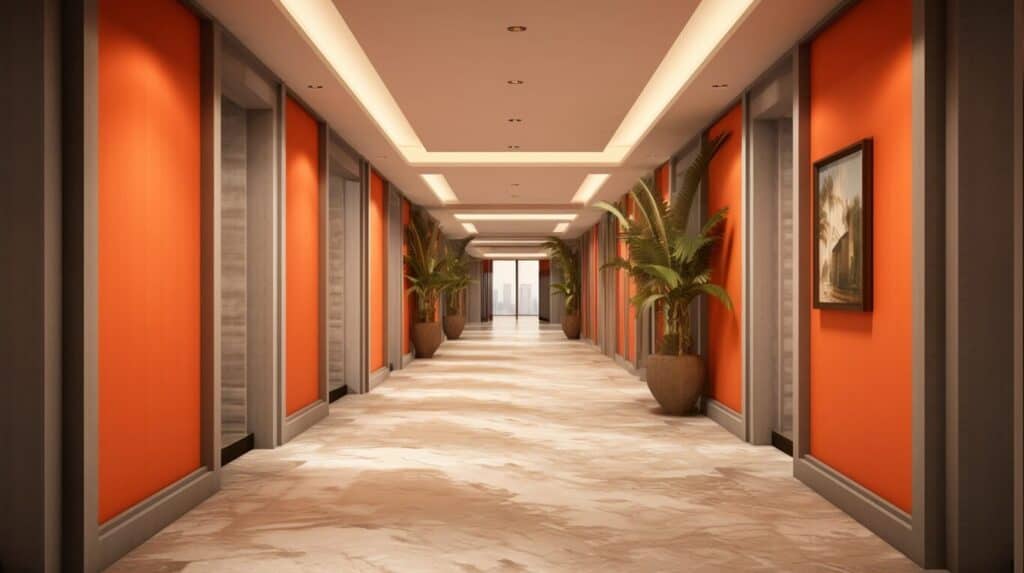
- Reception Area: Consider an elegant and well-lit fall ceiling office design using suspended panels or creative lighting fixtures. Incorporate brand colors and logos subtly. Choose materials like gypsum or metal tiles for a professional appearance.
- Conference Room: Prioritise acoustics with sound-absorbing false ceiling materials, such as acoustic ceiling tiles or baffles. Integrate recessed lighting for focused illumination during meetings. Consider a modern and sophisticated design to enhance the room’s aesthetic.
- CEO’s Office: Opt for a luxurious false ceiling design using high-quality materials like wood veneer or decorative metal. Integrate recessed lighting with dimming controls for a customizable ambiance. Consider incorporating a statement light fixture for added elegance.
- Open Workspace: Focus on modular false ceiling designs to delineate different work zones within the open space. Use acoustic panels or baffles to manage sound levels. Integrate flexible lighting solutions, such as suspended linear fixtures, to adapt to changing work needs.
- Cubicle Areas: Choose a practical and cost-effective false ceiling design using materials like mineral fibre or PVC tiles. Incorporate task lighting within each cubicle for individual workspace illumination. Consider a neutral colour palette for a cohesive look.
- Relaxation Area: Create a cosy atmosphere with a false ceiling design featuring soft, diffused lighting. Consider suspended baffles or acoustic clouds for a relaxed aesthetic. Incorporate vibrant colours or patterns to encourage a positive and creative vibe.
- Cafeteria: Prioritise hygiene with easy-to-clean false ceiling materials like metal or PVC tiles. Use bright and energy-efficient lighting to enhance visibility in dining areas. Consider playful or thematic designs for a lively cafeteria ambiance.
- Collaboration Spaces: Foster creativity with a Modern office ceiling design that allows for flexibility and collaboration. Use modular elements that can be rearranged for different group sizes. Integrate vibrant colours and dynamic lighting for an inspiring environment.
Tailoring false ceiling designs to specific office areas ensures that each space not only meets functional requirements but also contributes to the overall aesthetic and atmosphere desired in those particular settings.
Read More :- False Ceiling Design For Office Cabin
Some Sustainability Considerations you can take care off
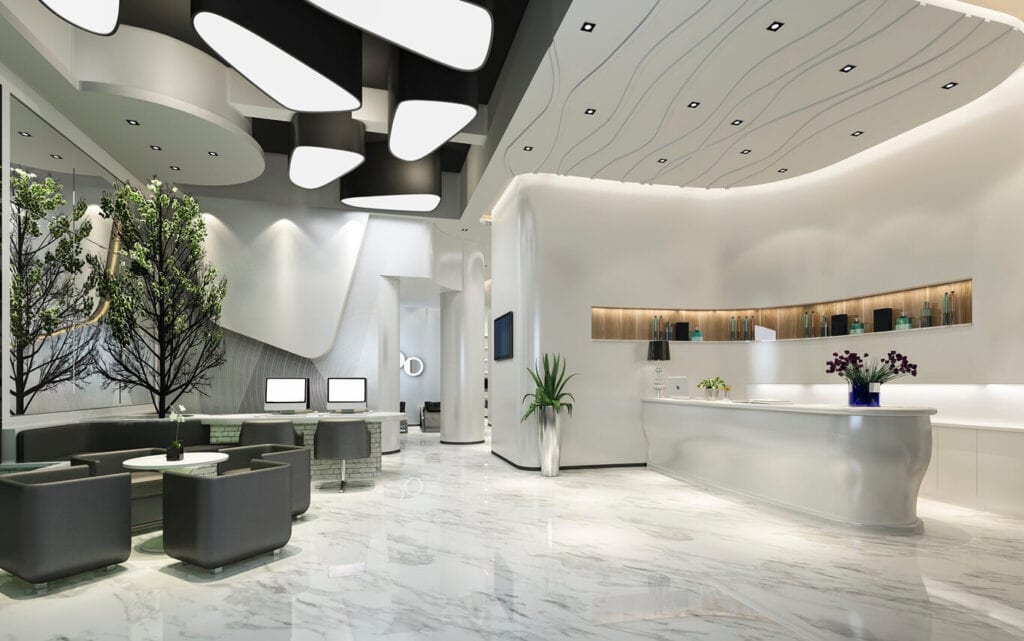
When considering sustainability in false ceiling designs for various office areas, several key factors should be taken into account. Here are sustainability considerations for false ceiling designs:
Material Selection:
- Recycled Content: Opt for false ceiling materials with a high percentage of recycled content. Materials like recycled metal, glass, or reclaimed wood contribute to reducing the environmental impact.
- Low VOC Emissions: Choose materials with low or zero volatile organic compound (VOC) emissions to maintain indoor air quality and minimise harm to occupants and the environment.
Energy Efficiency:
- Lighting: Select energy-efficient lighting fixtures, such as LED lights, to reduce energy consumption. Implement lighting controls, like occupancy sensors and dimmers, to optimise usage based on natural light availability and occupancy.
- Cool Roofing: If applicable, choose false ceiling materials with reflective properties to contribute to a “cool roof” effect. This helps reduce heat absorption and lowers cooling energy demands.
Durability and Longevity:
- Durable Materials: Choose false ceiling materials that are durable and have a long lifespan. This minimises the need for frequent replacements, reducing the environmental impact associated with manufacturing and disposal.
- Easy Maintenance: Opt for materials that are easy to clean and maintain, extending the life of the false ceiling and reducing the need for harsh cleaning chemicals.
Local Sourcing:
- Regional Materials: Prioritise locally sourced materials to reduce transportation-related carbon emissions. Supporting local suppliers also contributes to the regional economy.
- Sustainable Wood: If wood is used, ensure it comes from responsibly managed forests certified by organisations such as the Forest Stewardship Council (FSC).
Adaptability and Reusability:
- Modular Design: Consider modular false ceiling design for office that allow for easy replacement or reconfiguration. This adaptability minimises waste during renovations or updates.
- Reuse of Materials: Explore options for reusing materials from existing false ceiling design for offices when undergoing renovations or redesigns.
Life Cycle Analysis:
- Assessment: Conduct a life cycle analysis of the chosen false ceiling design for office materials. Evaluate the environmental impact at each stage, from extraction or manufacturing to installation and eventual disposal.
Certifications and Standards:
- Green Building Certifications: Choose false ceiling design for office materials that meet or exceed green building standards and certifications, such as LEED (Leadership in Energy and Environmental Design) or BREEAM (Building Research Establishment Environmental Assessment Method).
By incorporating these sustainability considerations into the selection and design of false ceilings, office spaces can contribute to environmental conservation and create healthier, more responsible work environments.
You Can Create stunning false ceiling design for office with Officebanao
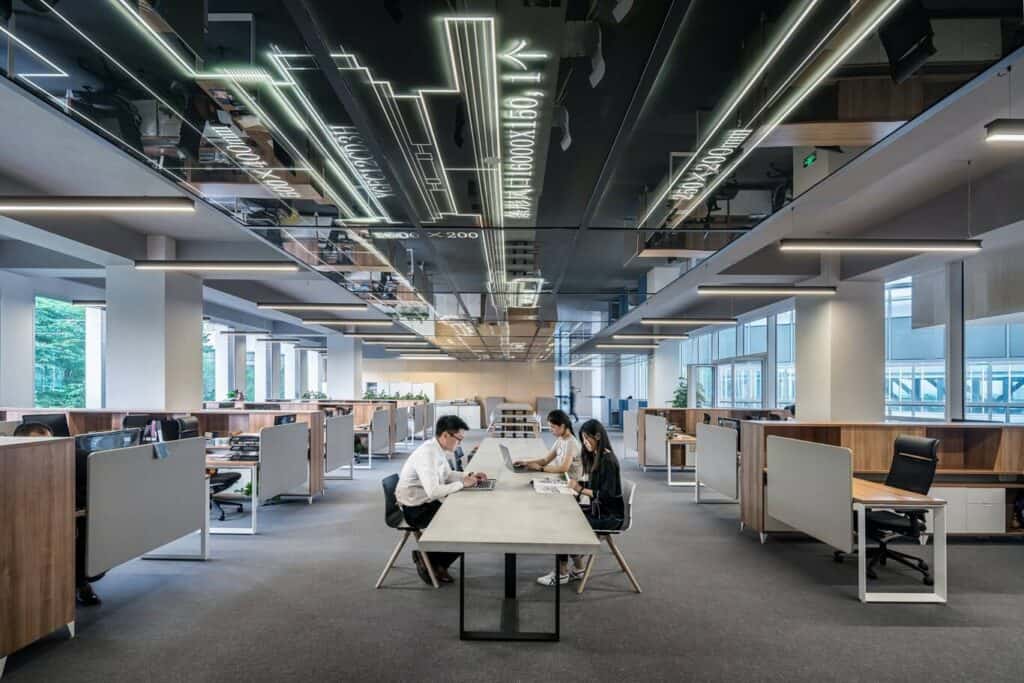
If you want to transform your office into a creative office room design, you can rely on Officebanao’s office interior designer. We have developed our own technology and gained extensive experience in creating contemporary office wall design. Our focus is on providing tailor-made solutions for office interior design for small offices that match your brand identity and business goals.

